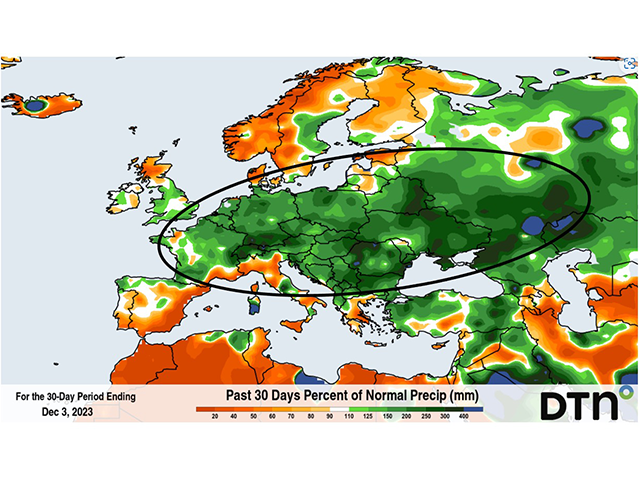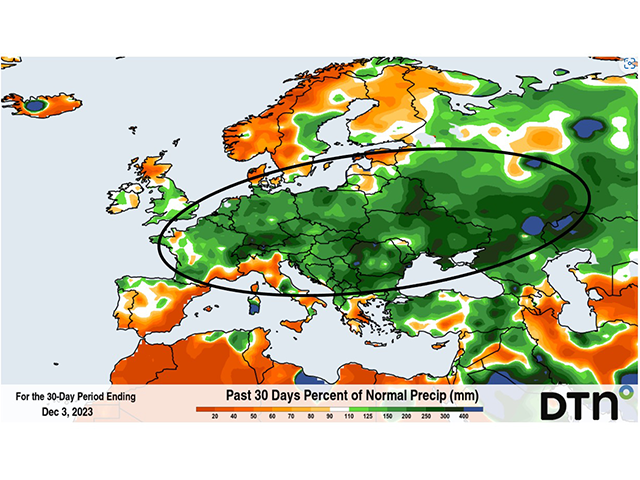Ag Weather Forum
Europe Wheat Planting is Waterlogged by a Wet Fall
The year 2023 has been full of extremes when it comes to weather in Europe. The continent endured both record heat and record heavy rain and flooding, along with a continued loss of mountain glaciers because of sustained warm conditions.
Now, extreme wetness is threatening winter wheat and other small grain acreage. The major grain areas of Europe have had from 200 to 400% of normal rainfall during the past 30 days except for the far south. In France, the largest grain-growing country in Europe, some districts had record rainfall between mid-October and mid-November. The major contributor to this soaking was a large-scale cyclone named Cieran which roared through the continent in late October-early November, but rain continued following the Cieran event as well.
P[L1] D[0x0] M[300x250] OOP[F] ADUNIT[] T[]
Wheat seeding delays are significant. France's ag ministry reports that 82% of the forecast soft wheat area was seeded as of Nov. 27, up from 74% the previous week but well below the seeding rate of 99% last year and the long-term average of 95%. Australia-based market analyst firm Lachstock Consulting noted in a commentary Tuesday, Dec. 5 that "The delayed sowing, poor crop establishment conditions and very little sunshine due to overcast skies since the winter-crop planting campaign commenced prompted Arvalis, France's largest applied agricultural research organization, to warn that 2023-24 cereal yields are likely to have already been adversely affected."
Europe's wet weather delays are also getting noticed by USDA. Its Nov. 28 weekly weather and crop bulletin noted "The protracted wetness since the middle of October has impeded late-winter crop establishment as well as the final stages of summer crop harvesting." The Australia group also notes that the European Commission agricultural division "expects the ongoing wet to decrease the winter cereal area across Europe, and expects a reduction in the final planted area compared to last year."
Commodity market reaction so far has been lukewarm; after all, there is still a long way to go before wheat harvest next summer. "My guess is that traders will take Europe's crop conditions more seriously in the spring of 2024, but for now, it probably has only light influence in the market," said DTN Lead Analyst Todd Hultman.
Globally, the United Nations World Meteorological Organization (WMO) confirms that 2023 is set to be the warmest year on record. One of the primary effects of continued atmospheric warmth is its driving of extreme weather events, including the heavy rainfall in Europe's wheat fields. "Extreme weather and climate events had major impacts on all inhabited continents (in 2023)," a WMO summation noted.
Bryce Anderson can be reached at Bryce.Anderson@dtn.com
(c) Copyright 2023 DTN, LLC. All rights reserved.






Comments
To comment, please Log In or Join our Community .